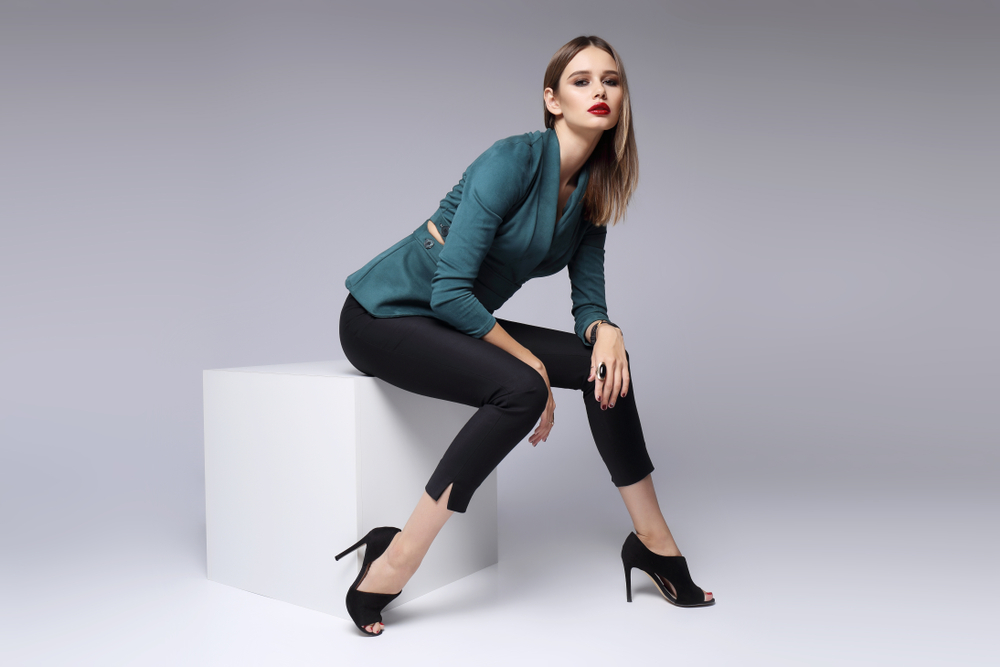
Modeling is an art form that requires more than just a pretty face or a perfect physique. It is about capturing a moment, conveying emotions, and creating a connection with the viewer. To achieve this, models need to master the art of poses, bending their bodies to create stunning and captivating photos. In this article, we will explore the art of modeling (or modelling) and provide tips on how to master the perfect poses for photoshoots.
Understanding the Essence of Modeling
modelling is more than just standing in front of a camera and looking pretty. It involves understanding the concept, theme, or story behind the photoshoot and translating it into poses. Each pose should capture the essence of the intended message, whether it's elegance, strength, vulnerability, or sensuality. A skilled model can convey a range of emotions through their body language, adding depth and meaning to the photographs.
Finding Inspiration and Creating a Mood Board
Before any photoshoot, it's crucial to find inspiration and create a mood board. Scour fashion magazines, websites, and social media platforms for images that resonate with the desired style or theme. Compile these images into a mood board to serve as a visual reference for poses, expressions, and overall aesthetics. By having a mood board, you can communicate your vision to the photographer and better understand how to bring it to life through your own modeling skills.
Mastering Basic Poses
While creativity is crucial in modeling, mastering the basics is equally important. These poses act as a foundation for more complex and experimental ones. Some essential poses include:
The Classic Portrait Pose: Stand tall with your chin slightly lifted, shoulders relaxed, and one foot slightly in front of the other. This pose helps create a strong and confident overall look.
The S-Curve Pose: Create the illusion of an S-shape in your body by shifting your weight to one leg and allowing your hips, shoulder, and head to naturally fall in different directions. The S-curve pose adds a touch of elegance and fluidity to your shots.
The Strong Arm Pose: Angle your arms away from your body to create a triangular shape. This pose adds strength and structure to your overall pose.
The Sitting Pose: Sitting poses are versatile and can convey different emotions depending on how you position your body. Experiment with crossing legs, leaning forward, or supporting your head on your hand to create variety.
Experimenting with Angles and Expressions
In addition to poses, experimenting with angles and expressions can transform an average photo into something extraordinary. Play around with different angles by shooting from above, below, or from unconventional viewpoints. This experimentation adds depth and visual interest to your images. Similarly, don't be afraid to experiment with expressions. Practice emoting a wide range of feelings to capture the desired mood, whether it's happiness, sadness, or mystery.
Working with Props and Accessories
Props and accessories can add depth and narrative to your photos. These objects can be anything from a hat, scarf, or umbrella to larger items like a vintage car or antique furniture. Incorporating props into your modeling (by models) not only adds visual interest but also helps you tell a story through your poses.
Frequently Asked Questions
Q: How do I practice my modeling poses?
Practice, practice, practice! Grab a mirror, your camera, or even a friend and practice different poses while observing your body language. Experiment with different expressions and angles to see what works best for you.
Q: How do I find my own unique style in modeling poses?
Finding your unique style takes time and experimentation. Browse through various fashion magazines, follow different models on social media, and take note of poses that resonate with you. Start imitating those poses and then gradually add your own personal touch to them.
Q: How important is communication between the model and the photographer?
Communication between the model and photographer is crucial in capturing the desired vision. Discuss the concept and theme of the shoot beforehand, exchange ideas, and ask for guidance during the shoot. A successful collaboration between the model and photographer is often reflected in the final images.
Q: What can I do to feel more comfortable in front of the camera?
Feeling comfortable in front of the camera takes time and practice. A few helpful tips include getting to know the photographer before the shoot, doing warm-up exercises to relax your body, listening to music that boosts your confidence, and reminding yourself that you are the star of the show.
Q: How important is body language in modeling?
Body language is essential in modelling (or modeling) , as it conveys a range of emotions and adds depth to your photographs. Practice using your body to express different emotions, experiment with different poses, and pay attention to the small details like hand placement, tilting your head, or crossing your legs.
Mastering the art of modeling is an ongoing journey that requires creativity, practice, and a willingness to push boundaries. By understanding the essence of modeling, mastering basic poses, experimenting with angles and expressions, and incorporating props and accessories, you can create stunning photoshoots that captivate viewers and leave a lasting impression.
Other useful resources
- https://www.planetmodelphoto.com/models/modeling/usa/wilmington/nc-north-carolina
- https://en.wikipedia.org/wiki/Modeling_agency
- https://en.wikipedia.org/wiki/Category:Modeling_(profession)